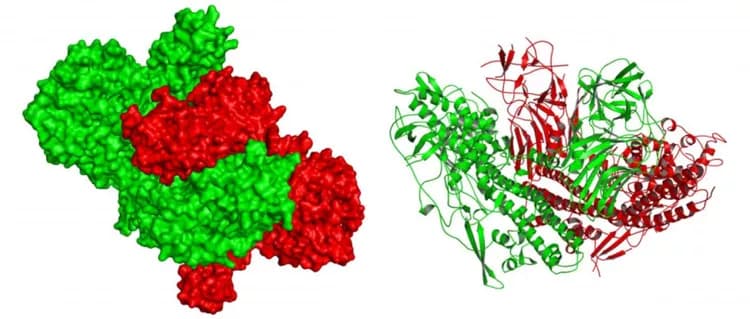Scientists at the U.S. Department of Energy's Brookhaven National Laboratory and collaborators at Stony Brook University and the Institute of Advanced Sciences in Dartmouth, Massachusetts, have discovered new details about how "cloaking" proteins protect the toxin that causes botulism, a fatal disease caused most commonly by consuming improperly canned foods. That knowledge and the cloaking proteins themselves might now be turned against the toxin-the deadliest known to humankind-to deliver vaccines or drugs that could prevent or treat the disease. The results appear in the journal Scientific Reports, published online December 7, 2015.
The key discovery was made by deciphering the atomic-scale structure of one form of the toxin bound to an associated protein. To determine these structures, the scientists studied crystallized samples of the bound toxin using x-rays at Brookhaven's National Synchrotron Light Source (NSLShttps://www.bnl.gov/ps/nsls30/), a DOE Office of Science User Facility, and electron microscopy.
Though there are seven different types of botulinum toxin, all are released from Clostridium botulinum bacteria as a complex of the toxin plus at least one such associated protein. When people eat contaminated food, the toxin/associated-protein complex stays together in the digestive system, but splits apart to free the toxin once it moves into the bloodstream, where it goes on to disable nerve cells, causing paralysis and death.
"We wanted to know how the toxin is protected, how the complex stays together in the harsh acidic environment of the human gastrointestinal (GI) tract, and how the toxin comes out once it leaves the GI tract and enters the bloodstream," said Brookhaven Lab biologist Subramanyam Swaminathan, lead author on the paper.
The atomic-scale structures reveal the detailed mechanism of how the toxin/associated-protein complex is assembled and stays intact under acidic conditions, and also how it disassociates when it enters the neutral pH conditions of the blood.
"As the pH changes to neutral, some of the acidic amino acids at the interface between the two proteins-the toxin and the associated protein-become negatively charged. The repulsion between the negative charges causes the toxin and the associated protein to separate, leading to the dissolution of the complex and the emergence of the active toxin," Swaminathan said.
The structures also revealed a strong similarity with one of the complexes formed by another botulinum neurotoxin, suggesting that there may be common elements across all seven varieties in the complex stage.
"The active versions of the toxins have quite different structures," Swaminathan said. "So finding any similarities among the seven varieties could help simplify the search for strategies to combat the toxin."
One promising approach, the scientists say, would be to use the toxin's own cloaking system to develop vaccines or drugs. For example, the cloaking proteins might be used to deliver inactive forms of the toxin that could trigger a protective immune response in the bloodstream-in other words an easily administered oral vaccine.
The cloaking proteins might even be able to deliver a drug that could disable the toxin before it has a chance to exert its deadly effects. This would provide an antidote to a deadly toxin that currently has limited treatments.
New treatments would certainly help mitigate the fears of home food canners-not to mention those concerned that botulinum neurotoxin might be used as a weapon of bioterror.
The above post is a redistributed news release provided by the University of Wisconsin-Madison. Note: Materials may be edited for content and length.
Disclaimer: DoveMed is not responsible for the adapted accuracy of news releases posted to DoveMed by contributing universities and institutions.
Primary Resource:
Subramaniam Eswaramoorthy, Jingchuan Sun, Huilin Li, Bal Ram Singh, Subramanyam Swaminathan. Molecular Assembly of Clostridium botulinum progenitor M complex of type E. Scientific Reports, 2015; 5: 17795 DOI: 10.1038/srep17795Related Articles
Test Your Knowledge
Asked by users
Related Centers
Related Specialties
Related Physicians
Related Procedures
Related Resources
Join DoveHubs
and connect with fellow professionals


0 Comments
Please log in to post a comment.